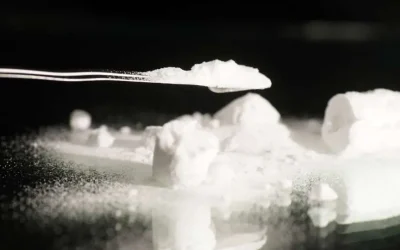Last updated: November, 2025
Adolescence is a formative time: a period of growth, self-definition, and constant emotional change. For many young people, curiosity leads to discovery, and discovery sometimes crosses into risk. What begins as experimentation with alcohol, drugs, or online gaming can quietly become dependency.
When that happens, families are left searching for answers: Why did this happen? How can we help? The truth is that addiction in teenagers rarely arises from rebellion alone. It is often rooted in pain, pressure, or a desire to belong. Recognising that distinction is the first step toward healing.
Across Europe, and especially in Spain, professional programmes of rehab for teens offer young people the chance to recover with dignity, supported by nature and compassion. This guide explores why teenagers become addicted, how to recognise the signs, and what to look for when choosing a rehab centre for adolescents, concluding with a closer look at the unique approach of Hacienda Paradiso in Málaga, Spain.
Understanding Teen Addiction
Why teenagers become addicted
Addiction often begins subtly. A teenager may drink or smoke to ease anxiety, to fit in, or to escape academic and social pressure. Over time, what feels like relief becomes routine. The brain learns that substances or behaviours bring temporary calm and so begins a cycle that feels impossible to break.
Mental health is a major factor. Conditions like ADHD, depression, anxiety, or low self-esteem can increase vulnerability to addiction. For some, gaming or social media use replaces emotional connection, reinforcing isolation and impulsivity. These patterns don’t define the teenager’s character; they reveal unmet needs for safety, stability, and understanding.
The connection between mental health and substance use
Modern research confirms what many families already sense: addiction and emotional distress are deeply intertwined. A rehab for teenagers must therefore address both. Effective treatment integrates therapy for teen addiction with mental-health support, teaching adolescents to regulate emotion and rebuild resilience without substances.
When curiosity turns into dependence
Experimentation doesn’t always mean addiction. Yet when the search for relief becomes habitual (when grades drop, moods shift, or relationships break) dependence may be forming. Recognising this transition early can prevent long-term harm and guide the young person toward recovery.
Recognising the Signs of Addiction in Teens
Parents often see the changes first. A once-open child grows distant. A motivated student begins to skip school. Hobbies fade, energy drops, and secrecy increases.
Common behavioural and emotional changes include irritability, sadness, isolation, or sudden bursts of anger. Physically, you might notice red eyes, fatigue, poor coordination, or the persistent smell of alcohol or cannabis. Financial issues (such as asking for money without explanation) can also signal risk.
These shifts do not always confirm addiction, but they ask for attention. When you sense that something deeper is happening, start with conversation, not confrontation. Ask how your teen feels, what’s been difficult lately, and whether they’ve been using substances to cope. Empathy opens the door where discipline alone cannot.
Early intervention matters. If the concerning behaviour lasts more than a few weeks, it’s time to seek professional advice. Speaking with a counsellor or exploring adolescent addiction treatment options can clarify whether help is needed, and what kind.
What Happens in a Teen Rehab Programme
A teen rehab programme is not a punishment. It is a protected environment designed to help young people regain control of their lives, supported by therapists, teachers, and medical professionals.
Safe detox and medical supervision
The first stage is usually detoxification, a carefully monitored process that allows the body to clear substances safely. Medical teams ensure physical stability while offering reassurance, especially important for adolescents who may fear withdrawal or judgment.
Therapy, counselling, and education balance
Once detox is complete, therapy begins. Effective rehab programmes for teenagers combine cognitive-behavioural therapy, creative expression, mindfulness, and group counselling. Education continues alongside therapy, so teens can keep pace academically and feel prepared to return to school after treatment.
Family therapy and aftercare planning
Family participation is essential. Through family therapy sessions, parents learn to communicate calmly, set boundaries, and support recovery without enabling harmful habits.
When residential treatment ends, structured aftercare and relapse-prevention programmes help maintain progress. Follow-up counselling and peer support groups encourage accountability and confidence, ensuring that new habits become part of daily life.
How to Choose the Right Rehab for Teens
Choosing a rehab for your teenager can feel overwhelming. Every parent wants safety, professionalism, and empathy. To make a sound decision, consider these key aspects:
- Accreditation and licensing: Confirm that the centre is fully certified and adheres to medical standards in your country or region.
- Qualified multidisciplinary team: The best rehab centres for youth include doctors, psychologists, and teachers experienced in adolescent care.
- Personalised therapy plans: Each teen’s journey is unique. Avoid centres that use rigid, one-size-fits-all programmes.
- Academic and emotional balance: Ensure that education continues during treatment, helping the teen reintegrate smoothly after recovery.
- Transparency and communication: A reliable centre will welcome questions about structure, medication, contact rules, and aftercare.
Be cautious of facilities that discourage family contact for long periods or rely exclusively on group sessions. True rehabilitation depends on connection, not isolation.
When evaluating teen rehab options, ask yourself: Does this environment feel safe, compassionate, and trustworthy? The right answer often comes from intuition as much as from information.
Why Choose Teen Rehab in Málaga, Spain
Among European destinations for addiction recovery, Spain stands out for its balance of professional expertise and restorative environment. Families from across the world come here not only for quality care but also for the serenity that supports it.
In Málaga, recovery finds its rhythm in nature. The region’s Mediterranean climate, with over 300 days of sunlight each year, naturally elevates mood and helps regulate sleep patterns — both crucial in the healing process. The nearby mountains and sea provide spaces for reflection and movement, grounding young people in sensory calm.
Teen rehab in Málaga also benefits from a bilingual culture. Many treatment centres offer programmes in English and Spanish, allowing international families to communicate with ease while ensuring their child receives precise, culturally sensitive care.
Spain’s healthcare regulations ensure that rehab programmes for teenagers operate with accredited professionals, strict safety protocols, and ethical transparency. For parents seeking a safe, bilingual, and clinically robust option in Europe, Málaga offers a rare combination of excellence and peace.
Hacienda Paradiso: A Place of Renewal for Teen Recovery
Set among olive groves and soft hills near Málaga, Hacienda Paradiso represents a new way of understanding recovery. Awarded Best Addiction Rehab in Europe & Spain 2024 and recognised as the Most Affordable Luxury Rehab in Europe, it is the world’s first eco-rehab, where nature and science meet to restore balance gently and completely.
Every detail of Hacienda Paradiso is designed to heal: from its sustainable architecture and organic gardens to the rhythm of days structured around therapy, mindfulness, and rest. Teen residents benefit from a combination of medical supervision, psychotherapy, and holistic therapies such as yoga, art, and nutrition-based wellbeing. Each plan is individualised, honouring the pace and privacy each young person needs.
Recovery here is not framed as a struggle but as a process of reconnection: with self, with family, and with the world. Parents are welcomed as part of the journey, finding their own guidance while their child rediscovers confidence and calm.
Frequently Asked Questions: Rehab for Teens
The goal of a teen rehab is not only to help young people stop using drugs or alcohol, but to understand why they started. Through therapy, medical care, and emotional support, teenagers learn to regulate emotions, rebuild confidence, and develop healthy coping strategies for stress and relationships.
Look for consistent changes in behaviour, sleep, or motivation that last more than a few weeks. Signs include withdrawal from family, loss of interest in hobbies, sudden mood swings, secrecy, or physical symptoms such as red eyes or fatigue. If these patterns persist, a professional assessment can help determine whether adolescent addiction treatment is necessary.
Rehab programmes for teenagers are designed around emotional development and family involvement. Therapy focuses on education, self-awareness, and emotional regulation rather than guilt or punishment. Academic continuity and parental participation are key components, ensuring that healing feels safe and structured.
Detox for teens is medically supervised and gentle. Doctors monitor each step to ensure physical safety and emotional comfort. Medication may be prescribed to manage withdrawal symptoms when needed, and therapists are present to help the teen process what’s happening emotionally.
Yes. Most rehab centres for youth integrate academic tutoring or online education into daily therapy schedules. This balance helps teens maintain their studies and transition back to school confidently after treatment.
Support begins with listening. Parents can help by staying calm, joining family therapy sessions, and creating a home environment that reinforces stability. Open communication, without blame or pressure, allows the young person to trust again. Recovery is a shared journey, not a solo effort.
Prioritise accreditation, bilingual staff, and personalised treatment plans. A good teen rehab in Málaga will combine clinical supervision with natural surroundings and holistic care. Ask about aftercare, therapy methods, and family involvement. Centres like Hacienda Paradiso in southern Spain offer all of these, within an eco-friendly, compassionate environment.
The length of treatment varies depending on the teen’s needs. Programmes typically range from 30 to 90 days for residential care, followed by several months of aftercare. The goal is sustainable recovery, not speed: every young person heals at their own rhythm.
Aftercare is the continuation of therapy and support once residential treatment ends. It includes counselling, relapse-prevention tools, and regular check-ins. For teens, aftercare ensures that recovery continues at home, helping them manage triggers and maintain balance as they return to daily life.
Hacienda Paradiso, located in Málaga, is the world’s first eco-friendly rehab and has been recognised as the Best Addiction Rehab in Europe & Spain 2024 and Most Affordable Luxury Rehab in Europe. Its approach combines medical precision with a natural, restorative environment, helping teenagers and families rediscover trust, peace, and connection.









